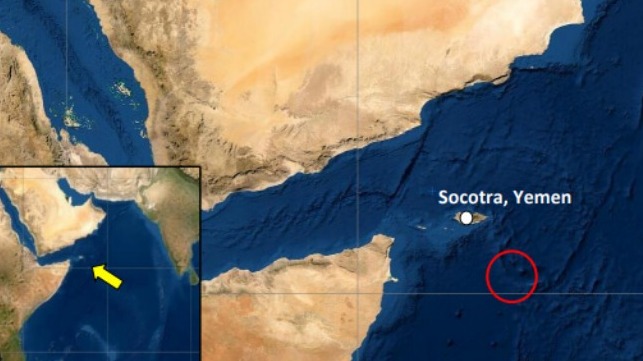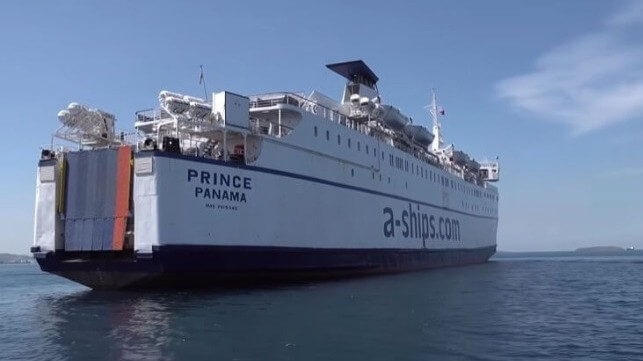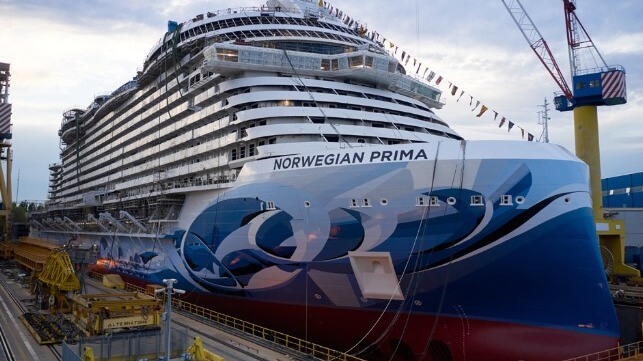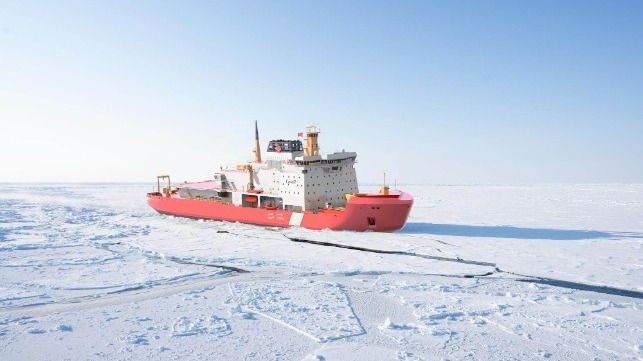Iran Promises Humanitarian Release of MSC Aries Crew

Iranian officials are promising to arrange the release of the crew from the seized MSC Aries on humanitarian grounds as they look to improve relations with Portugal, where the ship is flagged. News of progress came in a statement from the Iranian Foreign Ministry after a call with the Portuguese government. Previously, Iran made a similar statement tied to its efforts to improve relations with Pakistan which has citizens among the crew.
The international community has publicly applied pressure on Iran for the release of the MSC Aries which was seized on April 13 as it neared the Strait of Hormuz outbound from the Gulf. During the recent sessions at the International Maritime Organization pressure was also applied with calls for immediate release.
Unlike other instances where Iran leveled specific allegations against the vessels, in this case, Iran has vaguely called the seizure of the containership a “retaliatory move” for Israel’s attacks on the Iranian consulate in Syria and general aggression against Iran. They also said the ship “violated maritime law,” without any specifics while reports linked the ownership of the vessel to an affiliate of Zodiac Maritime, of which Israeli shipping magnate Eyal Ofer is an investor.
MSC said the week after the incident that “discussions with the Iranian authorities are in progress to secure their earliest release,” referring to the 25 crewmembers. MSC said it was also working with the Iranian authorities to have the cargo discharged.”
“We seriously consider the release of the ship’s crew as a humanitarian issue,” Iran’s Foreign Ministry said in a statement on April 27 after the call between Portugal’s Foreign Minister Paulo Rangel and his Iranian counterpart Hossein Amir-Abdollahian. “We have announced to their ambassadors in Tehran their access to consular services, release, and extradition,” the ministry said for the crew which consists of individuals from India, Pakistan, Russia, the Philippines, and Estonia.
Last week, however, a spokesperson for India’s External Affairs Ministry Randhir Jaiswal told reporters on Thursday that the 16 Indian crewmembers were expected to return home “after the completion of some contractual obligations.” He said the Indian consul in Iran had met with the crew on April 25 but did not give a timeline for their return. Iran had previously told India’s representatives that the crew was not being detained.
Days after the incident, Iranian released a female cadet who was working aboard the MSC Aries. Ann Tessa Joseph, a deck cadet on the ship, returned to India on April 18 reporting her colleagues were in good health and going about their daily work.
The Philippines was able to gain an agreement from Iran for its citizens working on a seized tanker being held by Iran to return home at the end of their employment contracts. That meant the crew spent months in Iran before recently being replaced by a new crew and then permitted to return home.
Houthi Attack on MSC Ship in Indian Ocean Indicates Further Range

Details of the attack on the MSC Orion (158,000) were confirmed today by the maritime security forces in the region after the Houthi claimed an attack on the vessel yesterday as part of their latest barrage. The incident however is raising troubling questions as the vessel was at a much greater distance from Yemen possibly indicating the Houthi have extended the range of their drones.
The UK Maritime Trade Organizations and Joint Maritime Information Center are confirming the details of the attack on the MSC Orion which came overnight on April 29 to 30. According to the JMIC, the vessel was in the Indian Ocean approximately 300 nautical miles east-southeast of the Horn of Africa, or more than 170 nautical miles south of Socotra island. The UKMTO puts the vessel’s position up to 400 nautical miles from the mainland of Yemen.
The ship which is registered in Portugal and owned by Eyal Ofer’s Zodiac Maritime chartered to MSC reported an explosion and found some debris believed to be from a “Uncrewed Aerial System.” The ship sustained some minor damage with the report that the crew was uninjured and that the ship was proceeding. Her AIS signal is off but the last indication is that she was bound for Salalah, Oman. Built in 2020 by Hyundai Heavy Industries in South Korea, she is a larger ship with a capacity of 15,000 TEU.
The Houthi in mid-March had threatened to expand the zone of attack to include portions of the Indian Ocean. They said they would disrupt ships attempting to divert away from the Red Sea and traveling around Africa. So far, while there have been several other Indian Ocean attacks, this is the first confirmed at these distances.
The Houthis are believed to be using drones manufactured in Iran. Military experts report Iran has claimed a capability of over 650 nautical miles for its drones and possibly further for its missiles.
Previously, for example, the tanker Marlin Luanda was approximately 60 miles from Aden when it was struck. The vessel was hit by a missile in January which caused a fire. The bulker True Confidence was approximately 50 miles offshore when it was struck in an attack that killed three crewmembers.
So far, none of the military and monitoring operations have specifically commented on the distance of this attack with the UKMTO repeating its standard comment about caution. Security analysts are however warning that it could raise new concerns for shipping that has already been forced to take longer routes to avoid the dangers.












